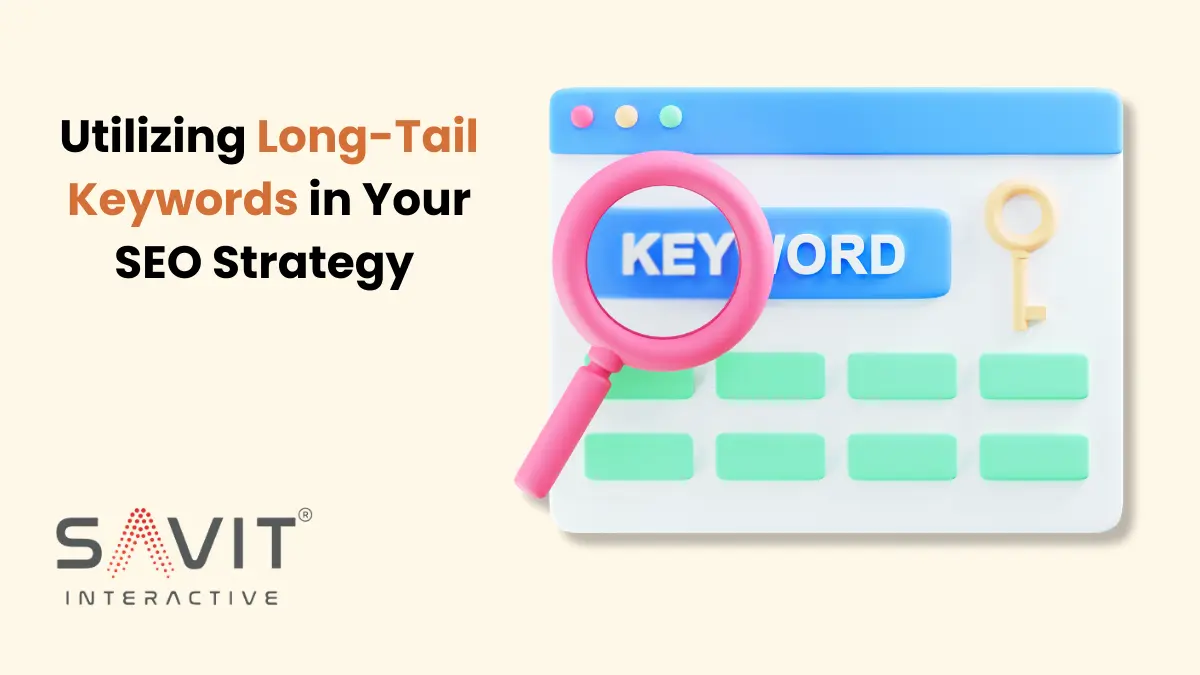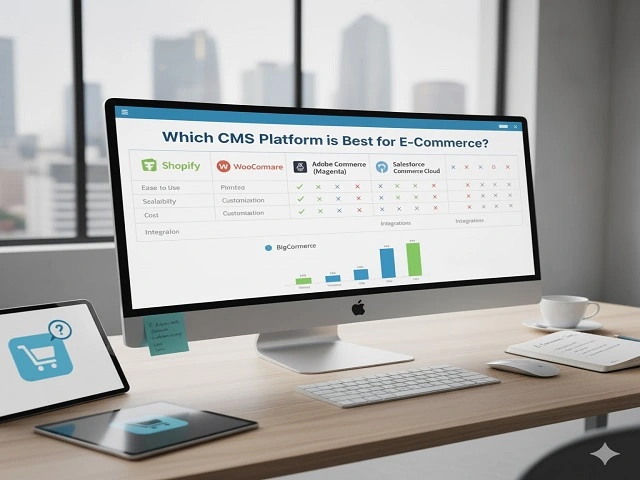Every company is fighting for online exposure, from neighborhood coffee shops to successful e-commerce sites. The competition is relentless, and the challenge is formidable. So, what can you do to make your company unique? A more sophisticated SEO approach that delves deeply into the more targeted and nuanced world of long-tail keywords—as opposed to generic short-tail keywords—holds the key to the solution.
Although long-tail keywords receive little attention in SEO, they are the secret for better search rankings, more traffic, and higher conversion rates. Long-tail keywords are a powerful tool in the hands of an SEO company that knows how to use them effectively because they are less competitive and more specific than their short-tail counterparts.
Read this blog to understand how even you can integrate these keywords in your SEO strategy and take full benefit of these techniques.
What Are Long-Tail Keywords?
Defining Long-Tail Keywords
When a consumer is getting close to making a purchase or is searching for a very specific product, they will use long-tail keywords, which are more focused, frequently longer phrases. Rather than doing a search for “shoes,” a user might try something like “comfortable running shoes for flat feet.” The latter is a long-tail keyword because it is less competitive, more targeted, and has a lower search volume. This makes it simpler for companies to appear for these keywords, particularly when working with a seasoned SEO marketing agency.
Importance in SEO Strategy
If your company wants to be more visible online, you need to include long-tail keywords in your SEO strategy. Using these keywords will help you reach specific markets, draw in a lot of relevant traffic, and eventually increase the number of visitors who become customers. Though they may have a high search volume, short-tail keywords like “SEO services” are also very competitive. On the other hand, long-tail keywords enable you to target a particular audience, increasing the efficacy of your marketing initiatives.
The Benefits of Using Long-Tail Keywords
Increased Conversion Rates
The capacity of long-tail keywords to increase conversion rates is one of their biggest benefits. These keywords tend to draw in visitors who are further along in the purchasing process because they are so specific. For instance, if someone searches for “cheap wedding venues in New York,” they probably have some idea of what they want and are almost ready to decide. Your company can increase the number of qualified leads who are prepared to convert by focusing on these particular phrases, which will increase the return on investment from your SEO services.
Lower Competition
Reduced competition is another important advantage of long-tail keywords. Big brands with enormous marketing budgets frequently dominate the short-tail keyword space; however, smaller businesses can compete with long-tail keywords. For instance, a neighborhood gym might have trouble ranking for the term “gym membership,” but with the correct SEO approach, it could rank for the phrase “affordable gym membership in Brooklyn” with ease. Your company may raise its search engine rankings and draw in more customers without breaking the bank by focusing on these less competitive keywords.
Enhanced Local SEO
Long-tail keywords are particularly helpful for local businesses in increasing their visibility in local search results. Optimizing your business for local search intent with keywords such as “best coffee shop near Central Park” or “top-rated salon in downtown LA” can help you reach customers who are prepared to visit your physical location. You can make sure your business stands out in local search results by identifying these keywords and optimizing your website accordingly with the assistance of an SEO company that specializes in local SEO.
How to Find and Select Effective Long-Tail Keywords
Keyword Research Tools
You must first conduct thorough keyword research in order to determine which long-tail keywords are best for your company. You can find relevant long-tail keywords with the aid of a number of tools, including Ahrefs, SEMrush, and Google Keyword Planner. You can see search volumes, levels of competition, and even related keywords that you might not have thought of with these tools. These tools will be available to an experienced SEO marketing company, which can then use them to carry out extensive research and determine which keywords will work best for your company.
Analyzing User Intent
It’s important to comprehend user intent when choosing long-tail keywords. You should think about the questions and reasons your target audience is asking. Are they comparing options, seeking information, or prepared to buy something? You can select long-tail keywords that meet the needs of your audience by examining user intent. This will help you make sure that your content speaks to them and encourages the actions you want them to take.
Examples of High-Converting Long-Tail Keywords
Let’s look at a few examples of effective long-tail keywords that could be highly valuable for different types of businesses:
- E-commerce Store: “buy eco-friendly yoga mats online”
- Local Restaurant: “best vegan breakfast in Austin”
- Professional Service: “affordable divorce lawyer in Chicago”
These keywords have a higher conversion rate, are more specific, and show strong intent. Your chances of success will rise if your SEO strategy concentrates on similar phrases in order to draw in a more focused audience.
Implementing Long-Tail Keywords in Your SEO Strategy
On-Page SEO Optimization
Once you’ve identified the right long-tail keywords, it’s time to implement them into your on-page SEO efforts. Include them in header tags, meta descriptions, title tags, and other sections of your website’s content. Make sure your keywords are incorporated organically into your content to prevent keyword stuffing, which lowers your search engine rankings. You can more easily integrate these keywords to enhance user experience and relevance by working with an SEO company that specializes in on-page optimization.
Content Marketing with Long-Tail Keywords
Content marketing is another powerful way to utilize long-tail keywords. By creating blog posts, articles, and other forms of content that target specific long-tail keywords, you can drive organic traffic to your site and position your business as an authority in your niche. For example, a blog post titled “How to Choose the Best Running Shoes for Flat Feet” not only targets a long-tail keyword but also provides valuable information to your audience, which can lead to higher engagement and conversions.
Technical SEO Considerations
Technical SEO is essential to the success of your long-tail keyword strategy, in addition to content and on-page optimization. Make sure your website loads quickly, is optimized for mobile devices, and is structured so search engines can easily navigate it. By assisting search engines in comprehending your content more thoroughly, these technical features facilitate the process of ranking your pages for the desired long-tail keywords influence.
Measuring the Success of Long-Tail Keyword Strategy
Tracking Performance
Using analytics software such as Google Analytics, Ahrefs, or Moz, you must continuously check the performance of your website in order to assess the effectiveness of your long-tail keyword strategy. You can monitor keyword rankings, organic traffic, and conversions with these tools, which will help you determine what’s working and what needs to be improved. To further optimize your strategy, an SEO company can assist you in analyzing this data and coming to well-informed decisions.
Adjusting Your Strategy
SEO is a continuous process rather than a one-time event. It’s critical to continuously modify your approach as search trends and user behaviour change. This could be fine-tuning your on-page SEO, improving the technical elements of your website, or updating your content to reflect new keywords. You can make sure your long-tail keyword strategy continues to be successful and produce results by being proactive and adaptable to changes.
Conclusion
The long-term advantages of long-tail keywords are evident, even though they may take more time and effort to find and use. They provide a means by which companies can stand out in a crowded market, draw in highly focused traffic, and improve conversion rates.
With the help of a knowledgeable SEO marketing company, you can take advantage of long-tail keyword potential to drive long-term business growth. The experts at Savit Interactive will carry out the essential research and method implementation to expand your online presence’s global reach on the world wide web. Reach out to us right now to begin.



